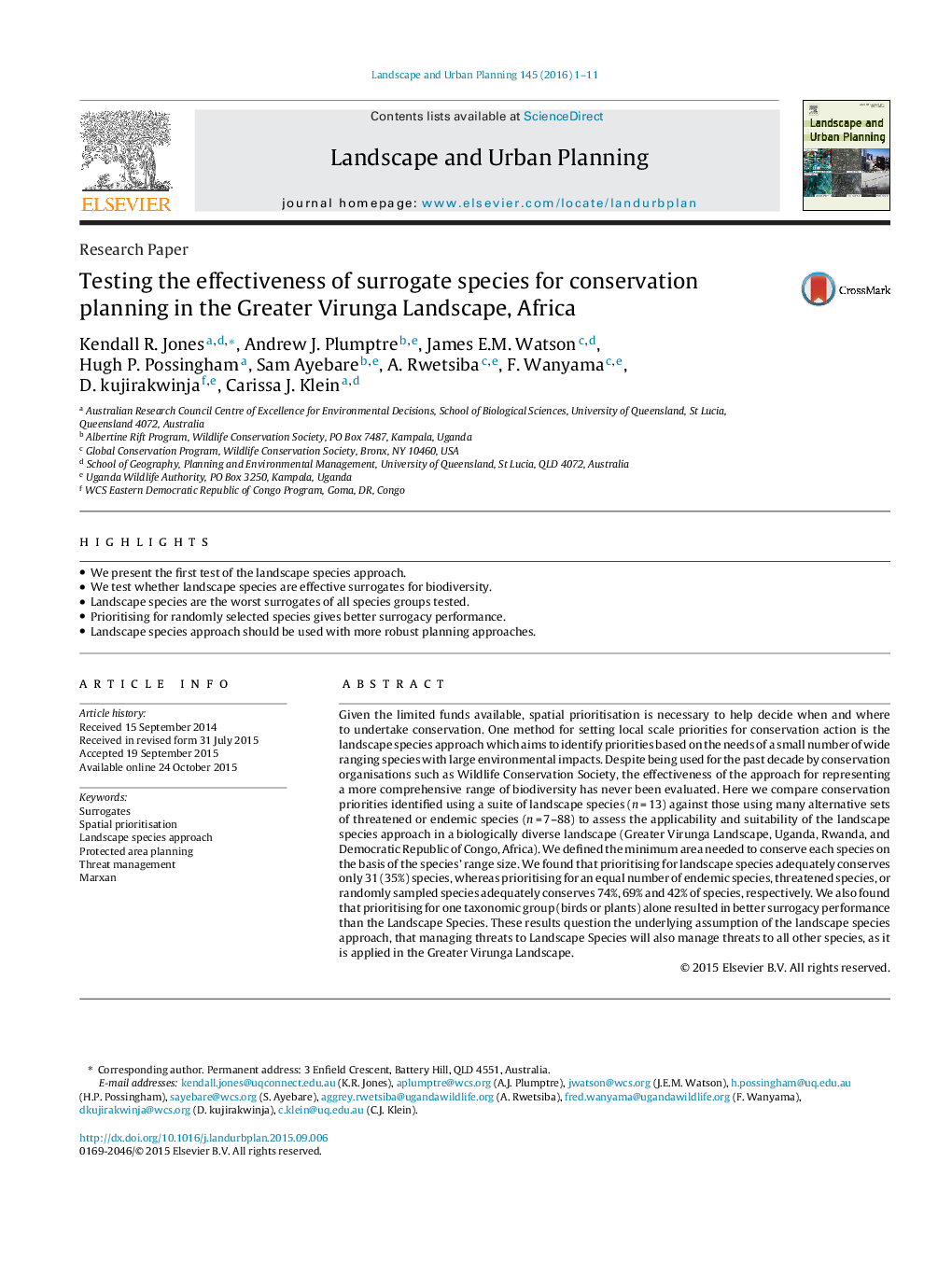| Article ID | Journal | Published Year | Pages | File Type |
|---|---|---|---|---|
| 1049080 | Landscape and Urban Planning | 2016 | 11 Pages |
•We present the first test of the landscape species approach.•We test whether landscape species are effective surrogates for biodiversity.•Landscape species are the worst surrogates of all species groups tested.•Prioritising for randomly selected species gives better surrogacy performance.•Landscape species approach should be used with more robust planning approaches.
Given the limited funds available, spatial prioritisation is necessary to help decide when and where to undertake conservation. One method for setting local scale priorities for conservation action is the landscape species approach which aims to identify priorities based on the needs of a small number of wide ranging species with large environmental impacts. Despite being used for the past decade by conservation organisations such as Wildlife Conservation Society, the effectiveness of the approach for representing a more comprehensive range of biodiversity has never been evaluated. Here we compare conservation priorities identified using a suite of landscape species (n = 13) against those using many alternative sets of threatened or endemic species (n = 7–88) to assess the applicability and suitability of the landscape species approach in a biologically diverse landscape (Greater Virunga Landscape, Uganda, Rwanda, and Democratic Republic of Congo, Africa). We defined the minimum area needed to conserve each species on the basis of the species’ range size. We found that prioritising for landscape species adequately conserves only 31 (35%) species, whereas prioritising for an equal number of endemic species, threatened species, or randomly sampled species adequately conserves 74%, 69% and 42% of species, respectively. We also found that prioritising for one taxonomic group (birds or plants) alone resulted in better surrogacy performance than the Landscape Species. These results question the underlying assumption of the landscape species approach, that managing threats to Landscape Species will also manage threats to all other species, as it is applied in the Greater Virunga Landscape.
